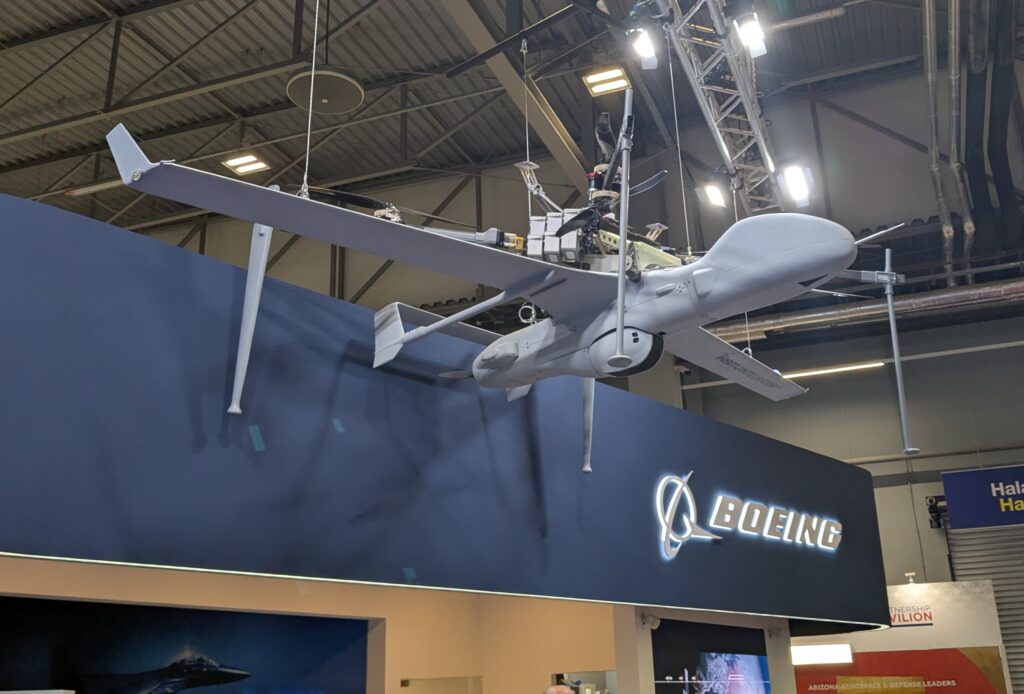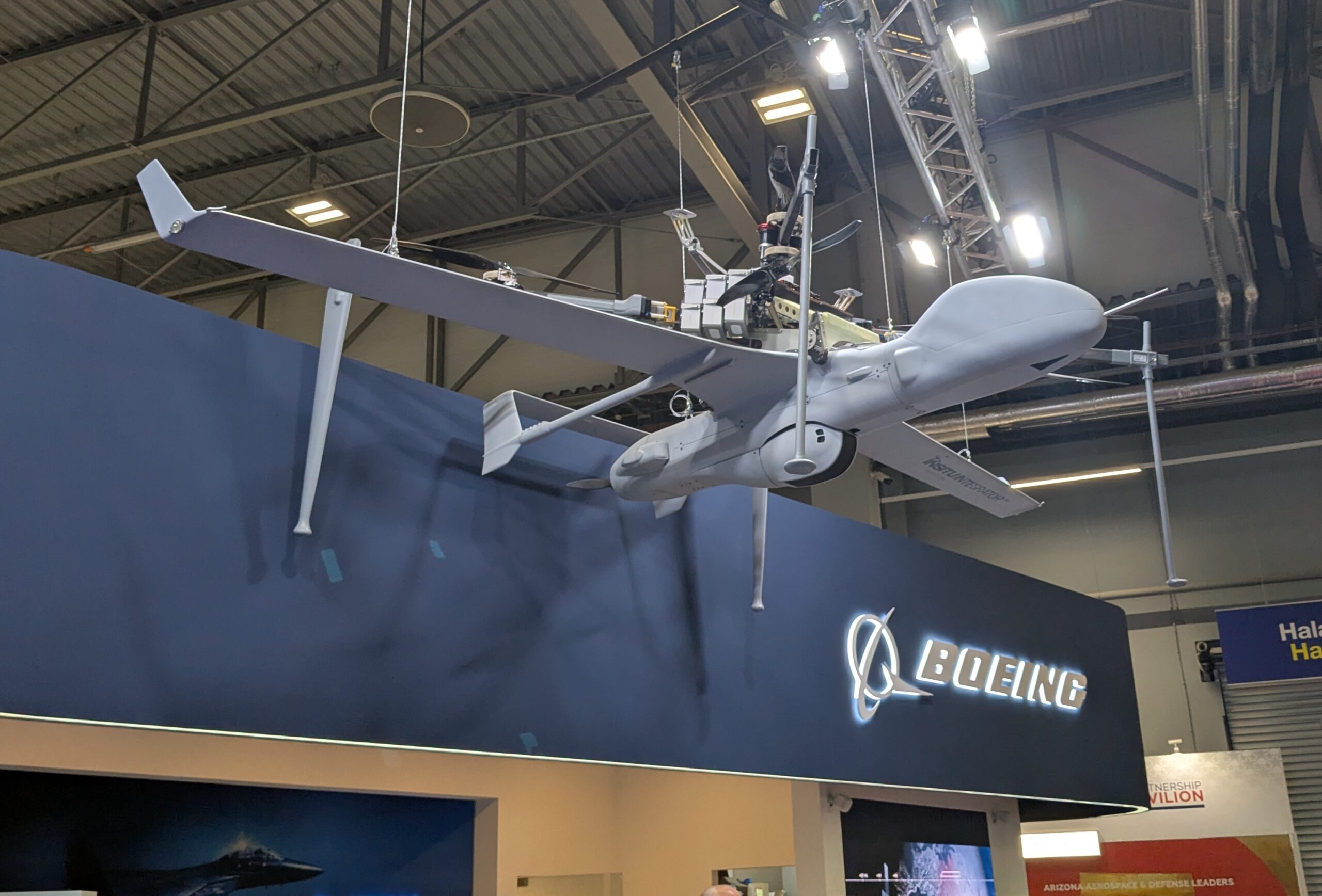Boeing’s Insitu business has secured a first customer for its Flying Launch and Recovery System (FLARES) vertical take-off and landing system, which, when paired with Insitu’s battle-tested Integrator fixed-wing unmanned aerial vehicle (UAV), constitutes the Integrator VTOL UAV.
Details of FLARES sales are not initially being detailed by Insitu, but a company spokesperson confirmed to ESD at MSPO 2025 on 3 September that at least one customer had been secured outside the United States, with the first systems to be delivered in 2026.
While the Integrator UAV has been in production for more than a decade, the Integrator VTOL, incorporating FLARES, was introduced in April 2023.
FLARES is a battery-powered vertical launch and recovery system that requires no modifications to the Integrator air vehicle and no additional launch or recovery equipment. The performance of the Integrator UAV, which offers an endurance of 27.5 hours with up to 50 lb (22.7 kg) of payload, is unaffected.
The Integrator VTOL is launched with the FLARES, featuring four rotors, mated with the Integrator UAV. This combination climbs vertically to around 500 ft (c152 m), heads into wind and then the Integrator UAV is released.
For recovery, FLARES takes off vertically tethered, hoisting a capture rope into the air. The Integrator UAV then catches on this vertical line via a wing hook. FLAREs then descends as the capture rope is spooled onto a winch on a Mast Augmented Recovery Systems (MARS), with the Integrator UAV settling on top of the mast. The unloaded FLARES then lands vertically.
Due to its small footprint of operations, the Integrator VTOL is suitable for operation in confined battlefield spaces or in a maritime environment off naval vessels.













